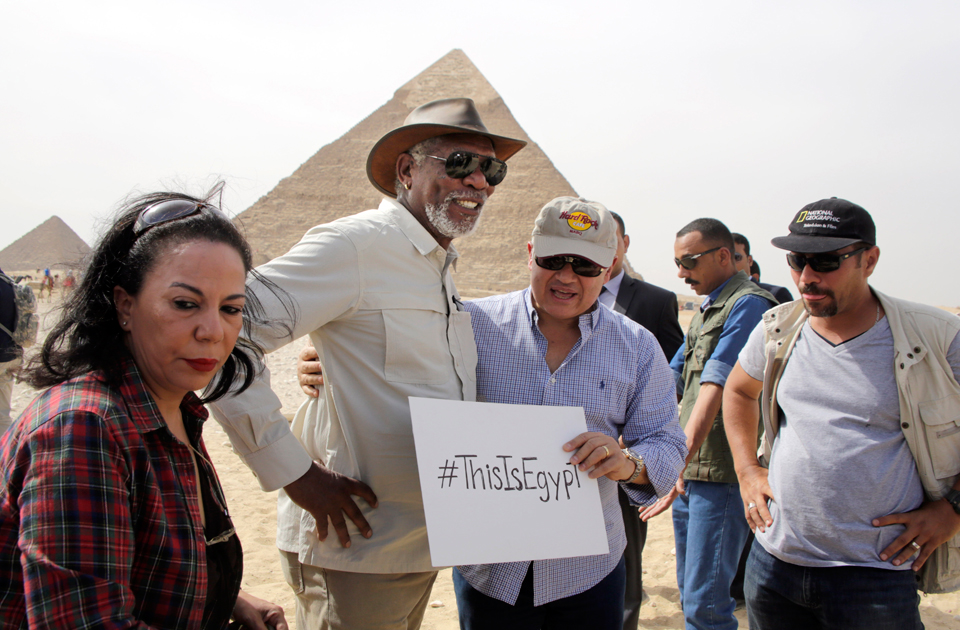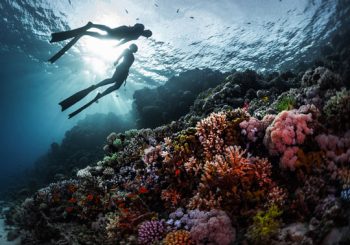By Abdel ElKader Ramadan, Aswat Masriya
Twenty days have passed since the launching of the #ThisisEgypt hashtag to promote tourism on social media platforms; but interaction remains low on Facebook and Twitter, while Instagram and YouTube had a better chance at garnering attention.
Minister of Tourism Hisham Za’zou’ launched the campaign in an effort to dispel what he views as a negative impression of tourism in Egypt.
Egypt has been striving to overcome the negative effects of the recent crash of a Russian jetliner over the Sinai Peninsula, which killed all 224 people on board, leading to the banning of flights to Sharm al-Sheikh by Russia, Turkey and U.K.
The hashtag relies on individuals, particularly influential youth with large following on social media, posting pictures of their personal travel experiences. The ministry entrusted well-known marketing communications brand J. Walter Thompson (JWT) to run the campaign.
However, interaction on social media did not meet the minister’s expectations.
Most of the posts on social media platforms were not representative of the main idea posited by the campaign, but rather contributions of news websites regarding the tourism sector mainly dominated the scene.
Other contributions came from specialised pages that deliver travel advice and offer guidance with hotels, restaurants and pricing packages.
In many instances, the #ThisisEgypt hashtag backfired as it was used by opponents of the current regime to post images that reveal security forces’ violations as well as images of Egyptians killed during post-30 June protests.
Others posted images reflecting some of the ailments of Egyptian society such as sexual harassment, traffic congestion, littering and mistreatment of tourists particularly by workers at archeological sites.
Meanwhile, other contributions included images of touristic spots in Egypt along with positive comments on the beauty of the Red Sea and the Western Desert.
Director of the Egyptian Authority to Promote Tourism Samy Mahmoud told Aswat Masriya that interaction on the #ThisisEgypt hashtag was very good. The authority has a full report on the number of visitors and their interaction, with the latest figure of hashtag users reaching 400,000 a week ago.
Mahmoud added that negative comments were indeed present, but did not exceed 4-5%, whereas 30% of comments were positive and the remaining used the hashtag without expressing their opinion whether positively or negatively.
According to the campaign’s official website (www.thisisegypt.com), the twitter handle carries a different name, that is “Experience Egypt”. The twitter account was originally created in June 2009 and is affiliated with the Egyptian Authority to Promote Tourism. It has around 13,200 followers and more than 8000 tweets.
Another twitter account by the name “thisisegypt” has only 57 followers and around 30 tweets.
In July 2013, a Facebook page by the name “Experience Egypt” was launched, attracting 213,000 followers. Meanwhile, the Facebook page carrying the name of the campaign attracted only 3000 followers.

The contributions that created the most buzz on the hashtag on Facebook was American actor Morgan Freeman and Greek-American composer and musician Yanni’s pictures while holding a placard saying #ThisisEgypt during their recent visits to Egypt.
Notably, there was a lack of interaction with the hashtag from celebrities, politicians and sports figures, with minor exceptions.
Many foreigners commented on the pictures posted via #ThisisEgypt hashtag, praising Egypt’s touristic sites and Pharaonic antiquities.
Meanwhile, the same hashtag in the Arabic language did not garner much attention on social media.
The Ministry of Tourism also launched a video as part of the campaign on December 10, with the number of views reaching almost 600,000 . The video ends with a call for Egyptians to visit different places in Egypt and document their experiences via photographs on the #ThisisEgypt hashtag.
Another video carrying the campaign’s name in Arabic was launched on Youtube a week earlier, reaching 183,000 viewers.
The campaign’s YouTube channel, originally created by the Egyptian Authority to Promote Tourism, dates back to 2006 and carries the name “Egypt”. It includes around 22,000 subscribers and attracted more than 18.5 million views.
Instagram was the most successful among social platforms in attracting attention, with more than 55,000 pictures uploaded with the hashtag. The campaign’s Instagram account only posted 717 pictures and attracted about 5400 followers.
The hashtag paves the road for an international campaign, which started with the Gulf a week earlier, in order to promote tourism and create media attention for the cause.
The campaign is expected to be launched in seven European countries in its first phase by the end of January. Publicity will be conducted through television, newspapers and social media platforms.
This article was translated into English by Nourhan Fahmy.
This content is from: Aswat Masriya







Comments (2)
[…] that tourism revenues fell by $1.3 bln after the plane crash. Last December, Zaazou launched the This is Egypt campaign[1] in an effort to dispel what he views as a negative impression of tourism in […]
[…] December, Zaazou launched the “This is Egypt” campaign in an effort to dispel what he views as a negative impression of tourism in […]